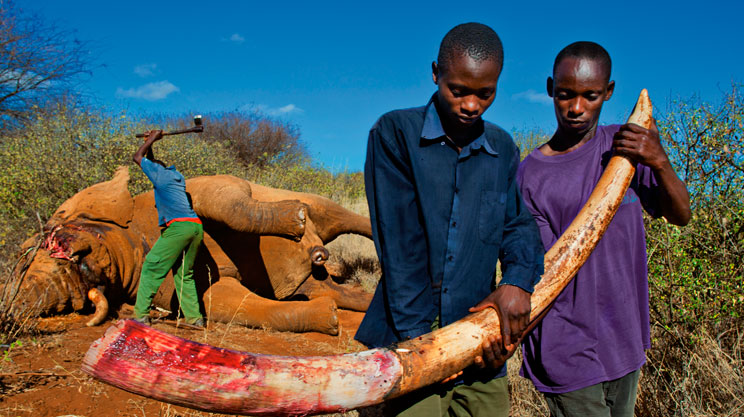THE PHILIPPINES CONNECTION
Santo Nino(Holy Child of Cebu) is the nation’s most important religious icon, this icon is so strong that some Filipinos believe the Santo Nino de Cebu is Christ himself.
Religion icons are always praised and in this case, every Filippino has a wooden or fibreglass made miniature Santo Nino icons. For some fibreglass or wooden icon is not enough, they want to show their faith by having a Santo Nino icon made by elephant ivory.
THE CATHOLIC-MUSLIM UNDERGROUND
The Vatican has not signed the CITES treaty so its not subject to the ivory ban and in fact is using ivory in many of their religious symbols.
Religion is a way of transforming ivory, which came from a hazy origin, into a religious and spiritual item. Just like buying a stolen item and putting it back to the market ready to be sold legally.
HOW TO SMUGGLE IVORY
Ivory smuggling to countries like the U.S. can take place by hiding into old, sticky underwear or painting it with removable brown watercolour to resemble wood.
THE ELEPHANT MONK
Phayuha Khiri and Surin are Thailand’s most famous in Ivory Trafficking. Phayuha Khiri’s carving industry was founded by a monk Kruba Dharmamuni now called as the Elephant monk who liked to carve ivory amulets making thousands of $’s per month as an income from his gift shop, the Internet, and foreign travels.
CHINA’S IVORY FACTORIES
China is the world’s greatest villain when it comes to smuggled ivory, many wealthy Chinese buy ivory made Buddhist symbols. To show their respect to Buddha they prefer ivory as the most precious material, more precious than gold since Ivory honours God.
THE JAPAN EXPERIMENT
After the global ivory ban of the 1990s some countries(Zimbabwe, Botswana, Namibia, Zambia, and Malawi) decided not to follow it because “..their elephant populations were healthy enough to support trade”
In 1997 CITES held its main meeting in Harare, Zimbabwe where Zimbabwe, Botswana, and Namibia made CITES an offer: They would honour the ivory ban if they were allowed to sell ivory from elephants that had been culled or had died of natural causes.
CITES agreed and authorized an experimental sale by those three countries to a single purchaser, the country of Japan. CITES by this experiment wanted to see if this sale increased elephant poaching and ivory smuggling numbers.
Counting dead elephants was already a difficult task due to its nature, so CITES didn’t have a historical report for dead elephants in order to compare them with any future reports past the experiment. That made the experiment controversial for a lot of people and participants.
Thousands of elephants die each year so that their tusks can be carved into religious objects. Can the slaughter be stopped?

